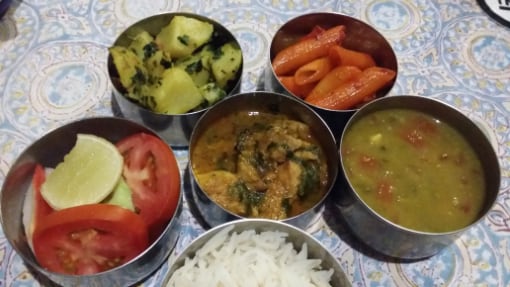
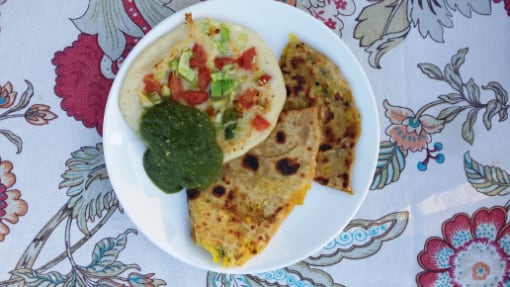
Chutneys of Rajasthan and Home-cooked food at Ikaki Niwas and Ikaki Bagh
Chutneys are famous in Rajasthan cuisine
- Enjoy home cooked, traditional dishes at Ikaki Niwas and Ikaki Bagh
- Learn to make traditional dishes at Ikaki Niwas, including beautiful chutneys
Overview
A ‘Chutney’ is a sauce or a dry base for a sauce, originating from the Indian sub-continent. Chutneys are used as an accompaniment to the cuisines of the Indian sub-continent. They come in hundreds of different forms, based on local availability of ingredients and traditions built up over hundreds of years.
Simple spiced chutneys can be dated to 500BC. This technique for preserving food was adopted the Romans and later by the British. As the British Empire reached far and wide, chutneys became popular in their colonies in America, Africa, Australia and New Zealand.
The word “chutney” is derived from the Hindi word चटनी chaṭnī, meaning to lick. In India, “chutney” refers both to fresh and pickled preparations. A different Hindi word, achar अचार) applies to pickles that often contain oil and are rarely sweet.
Historically, chutney was made in peoples’ home. This is still the case widely today although huge commercial companies have a dominant role in local and export markets.
Chutneys of Rajasthan
Rajasthan is famed for its rich regal culture. The arid landscape, extreme climate conditions, scarcity of water and limited vegetation has contributed to the evolution of a distinctive cuisine. Rajasthani is widely admired by tourists and distinctively different from the rest of India.
Today, Rajasthan is predominantly a vegetarian region. However, the influence of the ruling Rajputs remains significant with their love of non-vegetarian dishes, especially game meat.
Culinary techniques styles developed so that many of dishes can be stored for a couple of days and served without heating.
These dishes are ideal for chutneys which are an inevitable part of a spicy Rajasthani meal.
Chutneys were known as a travellers’ food. Light to carry and with only a small amount of the tangy, piquant spiciness needed to enhance a meal. Chutneys suited pilgrims, soldiers and traders alike.
Sparse rainfall is not conducive to growing a lot of green vegetables. Seasonal vegetables are often sundried and stored. This provides year-round access to vegetables and spices out of season.
Chutneys are often served alongside Rajasthani breads. Breads are made from the conventional staples of the region such as corn, barley and millet. They are most commonly roasted in frying pans and served after adding a little ghee on each piece.
Here are three famous chutneys of Rajasthan. These give a good sense of the flavours and tastes of the region and something of the origins of these dishes.
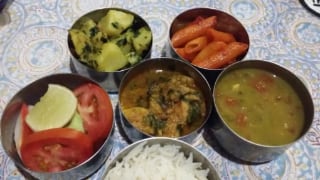
Kachri Ki Chutney
The landscape of Rajasthan is a great source of native plants. These provide ingredients for wonderful chutneys. Examples include Ker, a wild bush berry and Sangria, a type of ornamental pepper. Kachri, a wild cucumber is especially. It grows in abundance in the desert areas.
Kachri are much smaller than their cultivated counterparts. They have a similar bitter taste. However, when cooked, Kachri gives a pleasant, sour taste with a fresh, grassy smell.
To make a traditional Rajasthani Kachri ki chutney, the wild cucumbers are blended with fresh green chilis and garlic cloves. Next, a paste is made in sizzling mustard oil using chopped onions, red chili powder, turmeric powder, salt, fennel seeds and curd.
Kachri chutney is cooked on low flames. It is then served cold with hot parathas or flat breads.
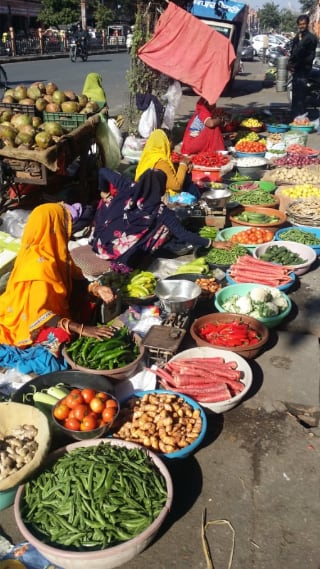
Tamatar Masala
This traditional relish is one of the most widespread and popular in Rajasthan. It is famous for its tangy, juicy and beautiful aromatic flavour.
The essential ingredients are some sweet, juicy tomatoes, onion and garlic. red chili powder, turmeric, powder, coriander powder, salt, garam masala powder, oil and mustard seeds. Some sort of sweetening agent such as brown sugar, coconut sugar or honey is also required.
It is important to use a heavy-bottomed pan to cook this chutney. No water is used to help increase the shelf life of the chutney. It is also essential to cook the dish on a very low flame. This avoids risk of burning and helps combine all the ingredients.
The chutney will be perfectly cooked when the oil has separated from the cooked relish.
Tamatar Masala is a popular flavour enhancer with a wide range of Rajasthani snacks, main dishes and breads.
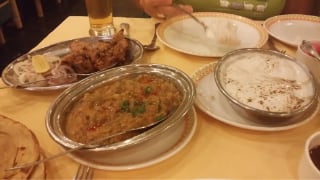
Lehsun Chutney
Unlike the previous two dishes, this chutney is served fresh with a splash of mustard oil, not cooked.
Red chilis are soaked in water for a few hours. They are then deseeded and blended with garlic cloves to make a coarse paste.
The paste is then mixed with lime juice, roasted cumin powder and salt.
The chutney can be served as is but is even tastier with a little sizzling mustard oil blended in. It is commonly served as an accompaniment to snacks such as parathas, pakoras, momos or aloo-tikkas.
Lehsun Chutney is an essential accompaniment to one of Rajasthan’s most famous dishes, Dal Bati Churma, a dish combining dal and small, hard bread rolls made from wheat. Dal Bati Churma is widely served at all festivities, including religious occasions, wedding feasts and birthday parties.
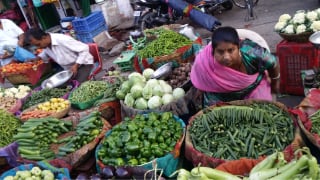
At Ikaki Niwas
Our produce from Ikaki Bagh is widely used at Ikaki Niwas, our boutique family hotel we run in Jaipur City.
At Ikaki Niwas, there is the opportunity to undertake cooking classes with members of the Rathore family.
Guests can learn how to cook Indian specialities and some local family favourite dishes. This includes making or sampling chutneys popular in Jaipur from lemons, mangoes, bitter gourd or green chilis.

